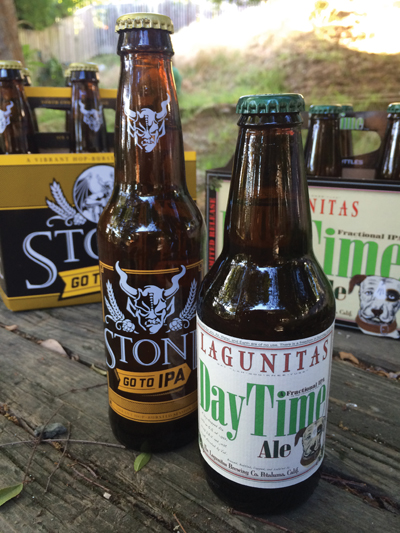by Mark Meli

Wow, this is exciting. It isn’t often that one gets to write a column about a completely new beer style, but now is my chance. If you have been drinking much Japanese or American craft beer lately, then you probably have noticed the style I am talking about, the “Session IPA.” We will soon come back to the question of whether or not this really is a new style, but for now, let’s assume that it is. So, then, what is it?
A drinking “session” is a continuous period of time spent drinking beer. It may be an afternoon, or an evening, or the combination of both, but the implication is that it is a rather long period of time, not just an hour or two. A “session beer” is a beer that is low enough in alcohol to enable you to drink throughout the whole session without getting intoxicated. In the UK, the typical session beer is a bitter ale, usually less than 4% abv. In America, where some would define it as a beer you can drink without getting too intoxicated, they are no more than 5%.
The American session ale arose over the last few years in response to the previous big trend in American craft beer—the race to make everything bigger and stronger: imperial stouts, double IPAs, barley wines, bourbon barrel aging…you get the picture. Too many people were getting way too drunk and started calling for a lighter beer that was still full of flavor. Various kinds of session ales and lagers popped up along the way, but we finally reached that truly American ideal: the session IPA.
A session IPA is normally golden to light amber colored. It usually has a simple malt profile, with pilsner or pale malts common, and wheat sometimes added as well. There is usually little to no caramel flavor coming from crystal malts. It should be bursting with hop flavors and aromas—often from American or New Zealand varietals, and usually with flavors of citrus and tropical fruits rather than grass, hay, or pine resins. It should not be overly bitter, however. The key to the session IPA is big hop aroma, low hop bitterness. You can enjoy the brilliant hops without having your mouth go numb. Most importantly, it should be 5% abv or less.
So, some of you might ask, isn’t that just a pale ale? Or for those of a British bent, a hoppy golden ale? Here’s where the story gets murky. Supporters of the session IPA category maintain that an American pale ale usually has more crystal malt, less hop aroma, and more bitterness than a session IPA. They also maintain that classic British golden ales have less aromatic, or at least different, hop profiles.
Several of the big trend-setting session IPAs from the US are available in Japan, including Lagunitas DayTime and Stone Go To IPA. Both of these tend to be paler in color, cleaner in malt, and more aromatic than their brewery’s pale ales. The British question is more difficult, but there are few truly hoppy UK golden ales that are available in Japan, so we can leave that question for another day. I say, don’t take the “expert” word for it—how about tasting a few and finding out for yourself?
Several Japanese breweries have already jumped on the bandwagon, as most beer lovers will have recognized. This spring, I particularly enjoyed the session IPAs from Coedo, Aqula, and Y. Market Brewing, but there are many other beers without the name that seem to fit into the category, like Minoh Session Ale, Shiga Kogen Africa IPA, and even Oze no Yukidoke IPA, all of which are supremely hoppy and come in at 5% abv or less.
Whether or not you think that this is really a new beer style or not, I think we can predict that lower-alcohol, highly fragrant beers will be a big hit in Japan, where the drinking session typically includes much less alcohol consumption than in the US or UK. These are great beers to reach for during a summer afternoon picnic or an evening visit to the pub.
All Beer Styles articles are written by Mark Meli, author of Craft Beer in Japan.
This article was published in Japan Beer Times # () and is among the limited content available online. Order your copy through our online shop or download the digital version from the iTunes store to access the full contents of this issue.



